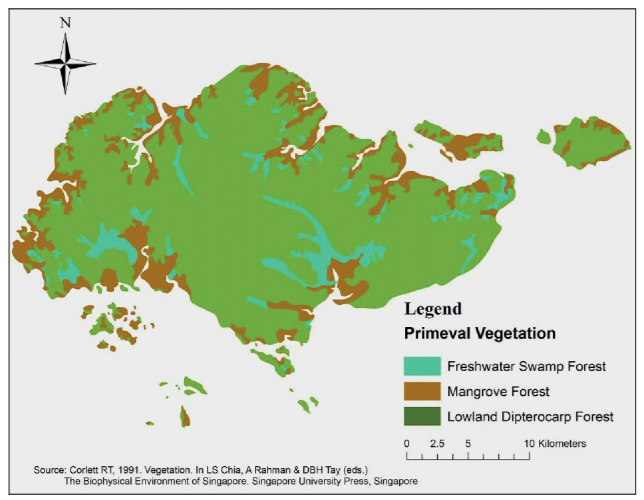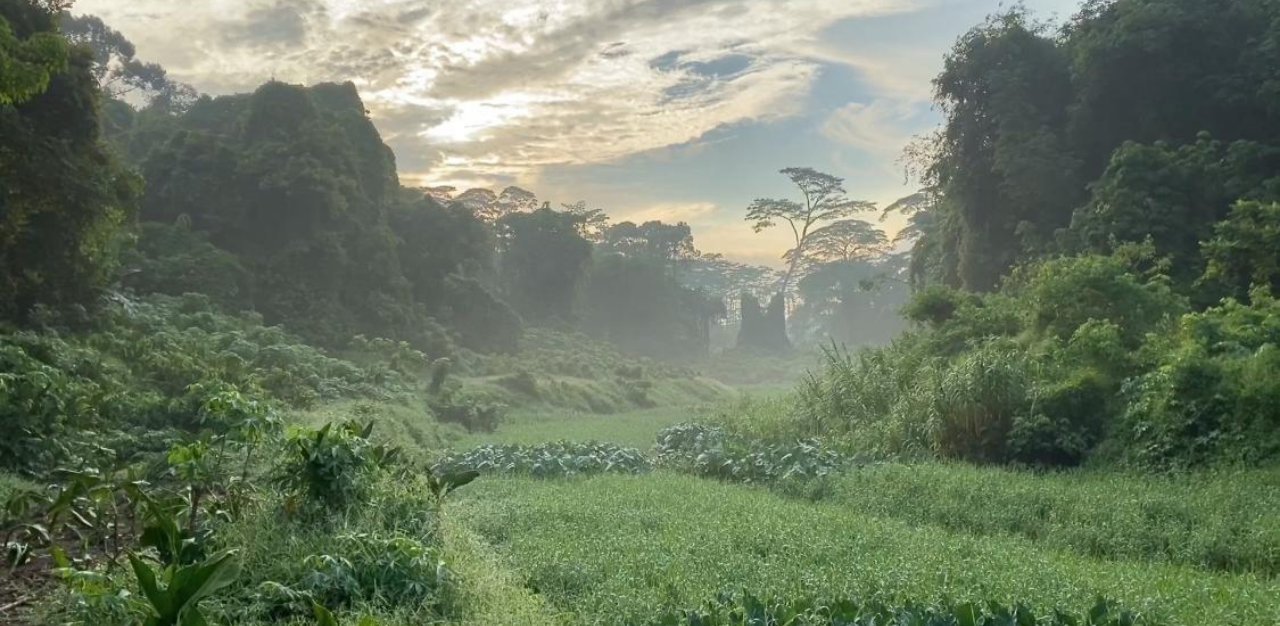Oxymoron /ˌɒksɪˈmɔːrɒn/ (Noun). A figure of speech in which apparently contradictory terms appear in conjunction.
Just a few days ago, Singapore’s Housing and Development Board (HDB) announced that new residential flats will be launched in the Ulu Pandan estate this year. This new development will come at a cost — the Dover forest, which has been untouched for the past 40 years.
This announcement comes mere weeks after the nature-loving community in Singapore breathed a temporary sigh of relief when National Development Minister Desmond Lee clarified that Clementi Forest was safe from residential development in the immediate future.
In response to the announcement of Dover Forest’s development, nature groups and the public alike have voiced their concerns over the rapidly-diminishing amount of nature in Singapore.
But in land-scarce Singapore, is this trade-off unavoidable? How can we strike the balance between conservation and development? Or is sustainable development in a tiny island like ours a balancing act that is bound to fail?
To answer these questions, we spoke with the Urban Redevelopment Authority and Nature Society (Singapore) to better understand both sides of the coin, and how these agencies work together for the betterment of our country.
But first, an introduction to Singapore’s natural history
As is expected, much of primeval Singapore prior to colonisation was covered by forests. However, this quickly changed upon colonisation by the British in 1819; in less than a century, 90% of the primeval forest in Singapore had been cleared to make way for agriculture (Yee, Corlett, Liew, & Tan, 2011).

Upon Singapore’s independence, land use change in Singapore changed and was primarily driven by urbanisation and modernisation instead of agriculture. Active large-scale land reclamation begun in the 1960s, and by 1973, less than 30% of Singapore’s land area was covered by spontaneous vegetation. By 1990, more than half of Singapore had been urbanised and more than 99% of the original forest had been cleared (Yee, Corlett, Liew, & Tan, 2011).

All things considered, the above map doesn’t look too bad. While vegetation in Singapore has undoubtedly decreased from primeval times (as to be expected), there still appears to be a good amount of vegetation across our country.
This is courtesy to the foresight of our Founding Father, the late Mr Lee Kuan Yew. From the get-go, he saw the need to keep Singapore green whilst we modernised in order to create a quality living environment. It is with this vision in mind that Singapore continues to be developed today.
In a bid to shed light on this process of transforming Singapore into a ‘City in Nature’, TheHomeGround Asia reached out to the Urban Redevelopment Authority (URA) to better understand their city planning process, and how creating a green city ties in to their planning process.
Creating a ‘City in Nature’
Despite our limited land space, there is good reason to keep Singapore green; according to URA, it “softens our urban landscape and brings benefits such as cooling the environment, improving air quality and even enhancing our flood resilience. [They] also provide places for us to enjoy nature, and bond.”
With these in mind, the URA’s strategy for development in Singapore has always involved an incorporation of greenery into our landscape. 10 per cent of our land is reserved for nature reserves and parkland, and within our tiny island, innovative solutions have been used to incorporate greenery into our city.
This includes Park Connector Networks, and integrating greenery and waterbodies into our urban environment, allowing for a thriving biodiversity and generous amount of leisure spaces for residents to enjoy. Today, the government’s efforts have allowed Singapore to become a “City in a Garden”, with over 40 per cent of our city covered in greenery despite being largely urban.
Even so, the URA has its eyes set on bigger things — to transform Singapore into a verified “City in Nature” within the next decade. This involves a further expansion of our current green and nature networks, and even more integration of greenery into urbanised areas.
Their goals are reflected in the latest Master Plan 2019, which will guide the development of Singapore over the next 10 to 15 years. Under this Master Plan, the URA aims to add another 1,000 hectares of parks, gardens, and park connectors to Singapore.
While these efforts are laudable, they are not equivalent to the conservation of our natural spaces. In fact, under URA’s current plan, almost 50 per cent of Singapore’s existing secondary forests can be converted into new development land uses in the next 10 to 15 years.
Redeveloping natural spaces: Environmental Impact Assessment
That is not to say that Singapore carelessly clears these natural spaces. Instead, we do have a systematic framework in place to help “determine and mitigate the potential impact of any new development on the environment”. This framework is known as the Environmental Impact Assessment (EIA).
In particular, development projects close to sensitive nature areas are subject to greater scrutiny and more extensive environmental studies. Projects can only proceed once they have met the requirements imposed by regulatory authorities including the National Environment Agency (NEA) and National Park Board (NParks), among others.
These environmental study findings are made publicly available online, and are considered by the technical agencies in consultation with community stakeholders – which brings us to our next point: the role of nature groups as the watchdogs of Singapore’s natural landscape.
Standing in the gap: Singapore’s nature groups
We spoke with Mr Leong Kwok Peng, the Chairman of Nature Society (Singapore)’s (NSS) Conservation Committee, to better understand their role in protecting the natural landscape and biodiversity of our nation.
Having worked with the NSS since the 1980s, Mr Leong has seen firsthand the changes in Singapore’s landscape since independence. Mr Leong now sits at the head of the Conservation Committee and regularly engages with the relevant authorities about the sustainable development and conservation of natural spaces in Singapore.
The NSS Conservation Committee reviews the EIAs whenever they are released to the public; subsequently, they will provide feedback as well as draw up their own counter-proposals on areas they believe are worth looking into and conserving.
A key example of this is the recent Dover Forest development. Following the announcement that Dover Forest was slated to be redeveloped into a residential area, the NSS reviewed the EIA and counter-proposed to turn Dover Forest into a public-cum-nature park instead.
When it comes to the sustainable development of Singapore, Mr Leong hopes that still more can be done to conserve our natural spaces. He acknowledged the scarcity of land, but hopes that the government can instead look towards redeveloping ground and open areas that have already been cleared for other purposes.
He hopes that these existing secondary forests and mangrove forests can be kept intact “for future generations to decide what to do with it”. He adds, “Our generation might not enjoy such areas, but the new generations might value it differently…[it is] important to leave as much of these wild areas alone for as long as possible.”
Make your voices heard
While nature groups like the NSS play a valuable role in pushing for the conservation of natural spaces in Singapore, Mr Leong still urges the public to do their part and make their voices heard.
He urges the younger generation to speak up and “make a conscientious effort to look through the [EIA] and give [the authorities] your honest opinion”.
Additionally, he hopes to see more individuals rallying together to make a stand, much like how they did when it came to petitioning for the conservation of Clementi Forest. After the stunning drone footage of Clementi Forest went viral, over 17,000 individuals signed a petition to protect the land from urbanisation.
Subsequently, Mr Desmond Lee came out to clarify that there was no immediate need or plans to develop the forest for housing.
The above is a prime example of the sheer impact that a collective voice can have. Mr Leong goes on further to add, “to conserve an area, you need more than just the noise from the NSS, we need the voice of the public”.
Besides writing to the government and Members of Parliament, Mr Leong also encourages those with an affinity for photography, videography, music, or the arts to do their part to document and share these spaces, raising awareness for them and helping the public uncover the true value that these green spaces bring.
Ultimately, the buck doesn’t stop with the authorities or nature groups — it starts and stops with you.
We are all on the same side
When asked about why NSS does what they do, their sentiments actually echoed that of the URA — greenery enhances our quality of life and makes Singapore a better place for both biodiversity and its residents.
The line between sustainability and development is an endless expanse of grey, but it is by no means mutually exclusive; the government has proven that with its continual effort to integrate nature into our city.
While the solutions might not always be ideal, it is thus up to the public to make our voices heard and make our wishes known if we do indeed wish for more natural spaces to be conserved.
At the end of the day, making Singapore a ‘City in Nature’ will need to be a collaborative effort from all parties – the authorities, nature groups, and the public alike.
Special thanks to: Urban Redevelopment Authority and Nature Society (Singapore)
Join the conversations on THG’s Facebook and Instagram, and get the latest updates via Telegram.




























